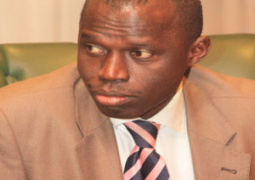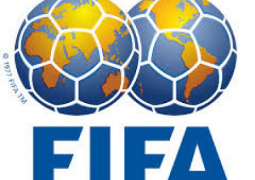
February
is the Domestic Violence Awareness Month Raising awareness of the long-term
effects of emotional, psychological and
physical abuse on individuals.
What is Domestic Violence
Domestic
violence refers to any form of violence by an intimate partner or by other
family members, regardless of the place where this violence takes place. Other
terms that can be used are domestic abuse, spousal abuse, family violence and
intimate partner violence (IPV), although they are not fully synonymous.
The
terms domestic abuse and domestic violence are often considered to have the
same meaning as intimate partner violence. Family violence is a broader term
that may be used to include child abuse, elder abuse and other violent acts
between family members. Domestic violence may take different forms, including
physical or psychological abuse, sexual abuse, and economic abuse. It should be
noted that these separate categories often go hand in hand. Physical abuse may
be slapping, beating, stabbing, strangling, burning, choking, threats with an
object or weapon and even murder. According to UNICEF, some traditional
practices harmful to women (such as female genital mutilation) are also to be
considered physical abuse. Sexual abuse takes place when the victim is forced
to unwanted sexual acts with the abuser or others through threats, intimidation
or physical force.
Psychological
abuse, or behavior that is aimed at intimidating and persecuting a person, is
also considered to be a form of domestic violence when it takes place in the
family. Psychological abuse may take various forms. For example, the
perpetrator may threaten the victim with abuse, abandonment, taking away the
custody of the children. This type of domestic violence also includes confinement
to the home, surveillance, destruction of objects, isolation, verbal aggression
and constant humiliation.
One
lesser-known form of domestic violence is economic abuse, in which the abuser
controls and intimidates the victim by denying those funds, food or other basic
needs, or by controlling the victim’s access to health care, education,
employment.
Although
the victims of domestic violence are often women and children and the
perpetrators are mostly men, there are also cases of abuse against men by
women. Domestic violence may take place in both heterosexual and homosexual
relationships, between current and former spouses, in unmarried couples living
together or in dating relationships.
Domestic
violence may have serious physical or psychological effects on the victim. One
psychological effect that is often mentioned is the battered person syndrome.
This has also been associated with post-traumatic stress disorder as victims of
domestic violence are exposed to severe trauma and they may sometimes feel they
are in danger even if they are not.
Because
women are the main victims of domestic violence, a concept of battered woman
syndrome (BWS) was developed by Dr. Lenore E. Walker. This term is used to
describe the emotional state of a battered woman, or a woman that has
experienced at least two complete battering cycles.
The
Battered Woman Syndrome
(1984)
Walker lists four main characteristics of the syndrome: the woman has the
feeling that she is to blame for the violence, she is unable to place the blame
elsewhere, the woman feels fear for her life or the lives of her children, and
the victim has an image of the abuser as omnipresent and omniscient.
BWS
serves as a basis for the so-called battered woman defence used in court cases
to defend women who have murdered their abusers after having been exposed to
physical or psychological violence.
Domestic
violence is considered to be a widespread problem but it is also one of the
most under-reported crimes, which makes it difficult to give a realistic
estimate of the number of incidents. This fact may be due to the victim’s fear
of the abuser, of judgment by the society or of inadequate reaction by the
police. For example, in the United States before the 1980s, many men supported
the idea that the woman belonged to her husband and he had the right to do
whatever he wanted with her. This viewpoint was also reflected in the work of
the police, which often undermined the importance of calls made by women to
report domestic violence. However, several lawsuits against inadequate police
protection have helped change the law toward better understanding of the
problem with domestic violence and more adequate intervention by the police.
It’s
February, and that means its Domestic Violence Awareness Month. The month that
is set aside to raise awareness of the long-term effects of emotional,
psychological and physical abuse on individuals.
However,
we rarely look at the possibility that a man could be a victim of an abusive
woman, even though highly respected studies like the National Intimate Partner
and Sexual Violence Survey demonstrate that about 50 percent of domestic
violence should be classified as “mutual aggressor,” meaning “they both started
it.” That survey was conducted by the Department of Health and Human Services
Centres for Disease Control so it’s hardly a partisan study out to push an
agenda.
Sometimes
men are abusers, and sometimes not. Sometimes they have been abused and done
the “manly thing” and let it go; they’ve been chivalrous and just taken the
emotional abuse or the physical hits, “because it wasn’t that bad.”
The
problem with this thinking is that domestic violence, no matter who the victim
is, is like climbing a spiral staircase with each round of abuse getting more
dangerous, more damaging and harder to escape. In the beginning, ignoring an
over the top burst of anger at a parking attendant may seem like a little
thing, until that anger is directed at you.
The
non-aggressor is being groomed by the burst of anger, so that when it is
eventually turned on them, they are already resigned to the fact that they will
be the target of the anger. As the angry outbursts progress from verbal to
throwing things, then slapping or punching, the increase in lethality is
happening. Sometimes it results in mutual combat that turns deadly,
The
issue of male victims of domestic violence gets little publicity, but when I
speak to both men and women, each acknowledges that it happens and it happens
in greater numbers than is generally recognized. Men don’t want to admit they
are being abused – it’s an affront to their masculinity – but it does happen.
There’s
no excuse for domestic violence, but there are explanations for behaviour and
if we’re going to actually break the cycle of violence, it’s important to not
only understand those causes but also treat them.
The
cycle of abuse continues until we speak up about it. It happens too often. It
is men dominating women. It’s women dominating men. It’s a parent dominating a
child in inappropriate ways.
Think
about this, where does an abusive man who grew up in a single parent household,
(that’s mostly moms these days) learn how to abuse? If dad wasn’t around to
abuse mom, where did the lesson come from?
Men
and boys are often the victims of emotional and physical abuse. We need to
recognize this and deal with it because until we do, we’re ignoring a large
population of victims who need our help.
Violence
against children, are Gambian children at risk?
How
would we explain the violence against children in the Gambia?
The
recent WHO definition of violence against girls.
“All
forms of abuse (physical, mental, emotional, direct, indirect etc.) against
girls under 18, schooled, or of school age.
Abuse
can occur both at home (housework, punishment, physical abuse, rape sexual
mutilation (FGM) and other traditional harmful abuse to the girls) ,and school(
punishment, discrimination, physical and verbal abuse as well as on the street.
Also
considered are cases of teenage pregnancy, sexual exhibitionism, indecent
assault, HIV- infection following rape, early forced marriage, forced abortion,
forced sexual mutilation, forced prostitution, forced labor.
The
Gambia is not an exception if it comes to violence against children as the very
recent case of rape that posed of deeply shocking news in Daily observer only a
few days ago.
The
newspaper report said: that a 20-year-old man raped a 5-year-old girl at Bakau
area not far from The Point office. Having lived in the The Gambia long enough,
this incident has not been the very first case of violent against children and
it will not be the last too.
Violence
against women is a reality in The Gambia as proven by the large number of cases
documented (89 cases) since the inception of Action Aid media survey. These
cases are said to be the tip of the iceberg.
Indeed,
most cases of abuses do lead to complaints and all complaints are not covered
by the media coverage. In addition there are reports exclusively on cases of
rape and infanticide. However, other forms of violence such as female
circumcision and early or forced marriage should have a better coverage in so
far as girls are hard-hit.
Media
survey by Action Aid: Violence against girls in schools in the Gambia from
January, February, march 2010.
Type
of Abuse and Site
The
cases were predominantly cases pf sexual abuse:
•Eight
(8) rape of minors including one case with kidnapping and another one with
serious physical after-effects;
•Two
cases of infanticide
•One
case of indecent assault, and one attempted rape.
These
violence acts took place in the following areas:
•At
Kololi in the KSMD region; Nema Kunku; at Sukuta in the district of Kombo; in
the municipalityof Kanifing; at Bundung.
The
registered victims were minors aged zero to eight. The average age was 10 – 12
years.
Ten
of the victims were of school age while the other two victims were new-born.
February
Ten
cases of sexual abuse and two analytical articles were published in the Daily
observer.
Type
of Abuse and Site
The
reported cases of abuse were exclusively cases with one leading to the victim’s
being pregnant. They occurred at Bundung in the Municipality; at the Children’s
SOS Village in Bakoteh; at Lamin Darang; at Palma Beach in Kotu; at Fajara
(KSMD); at Bundung; at Tobacco Road (Banjul); in the village of Sukutain Kombo
North District, and in the village of Sanyang (Kombo District).
The
perpetrators were unknown to the victims. However, three recorded cases were
perpetrated by the victim’s foster mother (Children’s SOS Village) who used to
force the 13-year-old girl to watch pornographic movies and had a sexual
relationship with her.
Violence
is found in school, institutions (such as orphanages and other residential
care). On the streets, in the workplaces and in prisons. Children experience
violence against children leads to death every year, but most often the
violence does not leave visible marks. Yet it is one of the most serious
problems affecting children today.
Children
may not feel able to report acts of violence for fear of retribution from their
abuser. Violence pervades the societies where children grow up. They see it in
the media. It is part of the economic, cultural and societal norms that make up
the child’s environment. It has its roots in issues such as the power relations
associated with gender, exclusion, absence of a primary care giver and societal
norms that are not protective or respectful of children. Other factors include
drugs, availability of firearms, alcohol abuse, unemployment, crime, impunity
and culture of silence.
Violence
can have severe implications on children’s development. In the severe cases, it
can lead to injuries and even death. However, it can also affect children’s
health, their ability to learn or even the willingness to go to school at all.
It
can lead children to run away from home, exposing them to further life
threatening risks. Violence also destroys children’s self-confidence and can
undermine their ability to good parents in the future. Children subjected to
violence have a heightened risk of depression and suicide in later life.
The
Child Protection Alliance (CPA) Representative in The Gambia, which supported
by UNICEF emphasized in a workshop on sensitization on “violence against
children in the Gambia” sharing the main finding and recommendations of the
United Nations on this important issue in The Gambia on 20 March 2009.
According
to the CPA the global study examines the nature, scope of violence against
children in the home and families, schools and educational settings, care and
justice institutions, places of work and in the communities.
For
further information contact the Child Protection Alliance, Action Aid, UNICEF
and Dr Azadeh on text: only 7774469/3774469.E mail drh_azadehmd@yahoo.com
Author
DR AZADEH Senior Lecturer at the University of the Gambia, Senior Consultant in
Obstetrics & Gynaecology, Clinical Director of Medicare Health Services.




